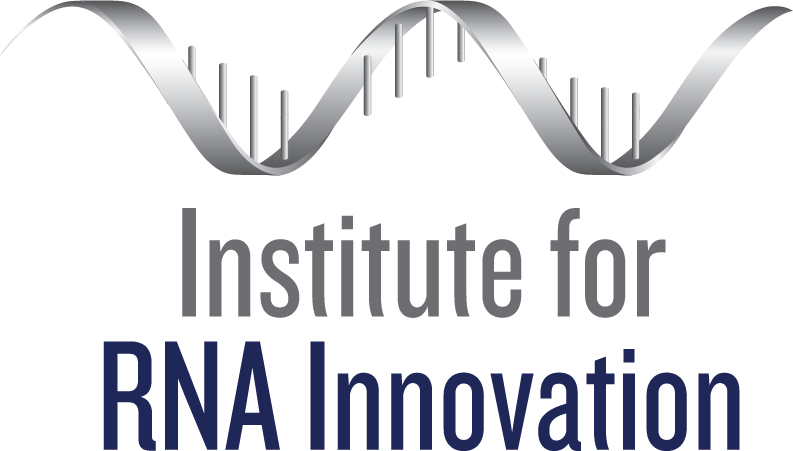
Bin Tian, Ph.D.
Contact Information
Gene Expression and Regulation Program
Ellen and Ronald Caplan Cancer Center
The Wistar Institute
3601 Spruce Street
Philadelphia, PA 19104
Description of Research Expertise
Much of the regulation of a protein-coding gene, during the flow of genetic information from DNA to protein, is executed at the RNA stage. The mRNA life includes several key events, such as pre-mRNA processing, nuclear export, mRNA decay, translation, and subcellular localization. Over 1,000 RNA-binding proteins (RBPs) have been identified in the human genome. They play critical roles in mRNA biogenesis and metabolism. Which sequences or structures an RBP binds, how does one RBP cooperate with other RBPs in binding to the same mRNA substrate, and what functional consequences a particular RNA-RBP interaction confers to mRNA biogenesis and metabolism are some of the questions we are addressing in the lab. We use interdisciplinary approaches to in our studies, involving techniques in molecular biology, functional genomics, and computational biology.
A major part of our research involves regulation of 3’ end processing of pre-mRNA, also known as cleavage and polyadenylation (CPA). Almost all eukaryotic mRNAs require CPA for 3’ end maturation and proper transcriptional termination. The CPA site, also known as polyA site (PAS), is defined by surrounding sequence motifs that are recognized by the CPA machinery, a mega Dalton protein complex containing over 20 core proteins. Many of the CPA factors are RBPs that interact with specific RNA motifs around the PAS. Additional nuclear RBPs binding near the PAS can substantially influence how a PAS is used. About 70-80% of human protein-coding genes harbor multiple PASs, resulting in expression of alternative polyadenylation (APA) isoforms.
Most APA sites change the length of 3’ untranslated region (3’UTR) of mRNA, leading to 3’UTR APA isoforms. While a distal PAS is typically stronger than a proximal PAS, both have similar conservation levels across mammals; and ~50% of human genes have conserved 3’UTR APA sites, supporting the importance of 3’UTR APA. The median size of an alternative 3’UTR, or aUTR, is about three times longer than that of the constant part of 3’UTR, presenting substantial greater opportunities for RBP interactions. On the other hand, by comparing 3’UTR isoforms, one can reveal 3’UTR-mediated regulatory mechanisms without the influence of other parts of mRNA, such as 5’UTR and coding sequence. We are particularly interested in RBP binding differences between 3’UTR isoforms and how they impact 3’UTR isoform stability, translation, and localization in distinct cellular contexts due to metabolic reprogramming and cellular stress.
A sizeable fraction of human genes also harbor PASs in regions before the last exon, mostly in introns, leading to early termination of transcription. These events, named intronic polyadenylation (IPA), are under the combinatory control of splicing and CPA. As such, the RBPs that regulate either one of the two co-transcriptional processes could substantially impact IPA. While IPA sites in general are less conserved than last exon PASs, ~20% of human genes contain conserved IPA sites. Some IPA events lead to transcripts encoding distinct protein isoforms, as exemplified by the transcript variants encoding membrane or soluble protein isoforms of IgM heavy chain protein reported in early studies. IPA transcripts in general, however, appear unstable as shown in our recent analysis. As such, IPA regulation is an effective mechanism to control gene expression, especially for long genes, which tend to harbor IPA sites. We are examining IPA regulation and functions in cell differentiation, stress response, and cancers.
Links
Search PubMed for Articles
Faculty Page
https://wistar.org/our-scientists/bin-tian
Selected Publications
- Guvenek A*, Shin J*, De Filippis L, Zheng D, Wang W, Pang ZP, Tian B. (2022). Neuronal cells display distinct stability controls of alternative polyadenylation isoforms, long non-coding RNAs and mitochondrial RNAs. Frontiers in Genetics. 13:840369. *co-first author.
- Cheng LC*, Zheng D*, Zhang Q, Guvenek A, Cheng H, Tian B. (2021). Alternative 3’UTRs play a widespread role in translation-independent mRNA association with endoplasmic reticulum. Cell Rep. 36:109407. *co-first author.
- Cheng LC, Zheng D, Baljinnyam E, Sun F, Ogami K, Yeung PL, Hoque M, Shin J, Ding Q, Lu CW, Manley JL, Tian B. (2020). Widespread transcript shortening in through alternative polyadenylation in secretory cell differentiation. Nat Commun. 11:3182.
- Zheng D*, Cho H*, Wang W*, Rambout X, Tian B#, Maquat LE#. (2020). 3’READS+RIP defines differential Staufen1 binding to alternative 3’UTR isoforms and reveals structures and sequence motifs influencing binding and polysome association. 26:1621-1636. *co-first author; #co-corresponding author.
- Wang R, Zheng D, Wei L, Ding Q, Tian B. (2019) Regulation of intronic polyadenylation by PCF11 impacts mRNA expression of long genes. Cell Rep, 26(10):2766-2778.e6.
- Chen S*, Wang R*, Zheng D*, Dai H*, Chang X, Wang K, Li W, Fan J, Tian B#, Cheng H#. (2019) The mRNA export receptor NXF1 coordinates transcriptional dynamics, alternative polyadenylation and mRNA export. Mol Cell, 74:118-131. *co-first author; #co-corresponding author.
- Guvenek A, Tian B. (2018). Analysis of alternative cleavage and polyadenylation in mature and differentiating neurons using RNA-seq data. Quant Biol. 6:253-266.
- Wang R, Zheng D, Yehia G, Tian B. (2018). A compendium of conserved cleavage and polyadenylation events in mammals. Genome Res. 28:1427-1441.
- Zheng D, Wang R, Ding Q, Wang T, Xie B, Wei L, Zhong Z, Tian B. (2018). Cellular stress alters 3’UTR landscape through alternative polyadenylation and isoform-specific degradation. Nat Commun. 9:2268.
- Wang R, Nambiar R, Zheng D, Tian B. (2018). PolyA_DB 3 catalogs cleavage and polyadenylation sites identified by deep sequencing in multiple genomes. Nucleic Acids Res. 46(D1):D315-D319.

